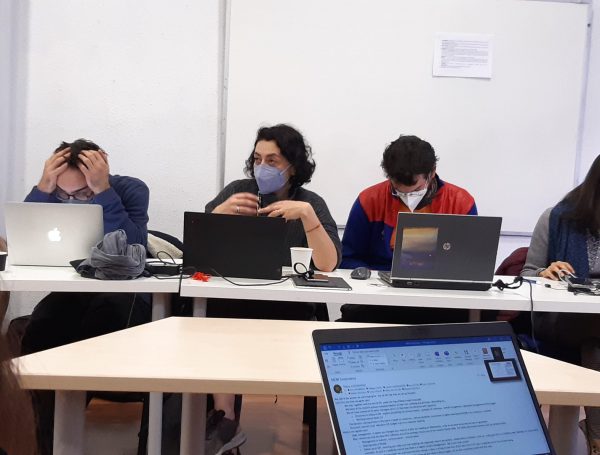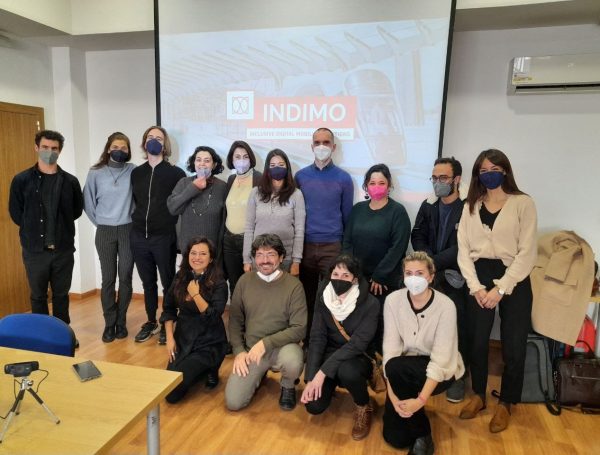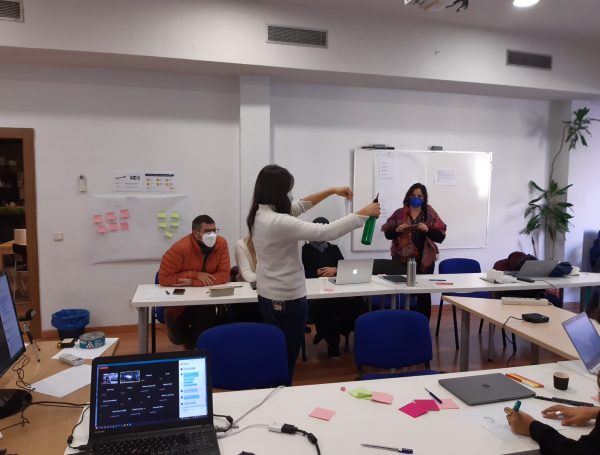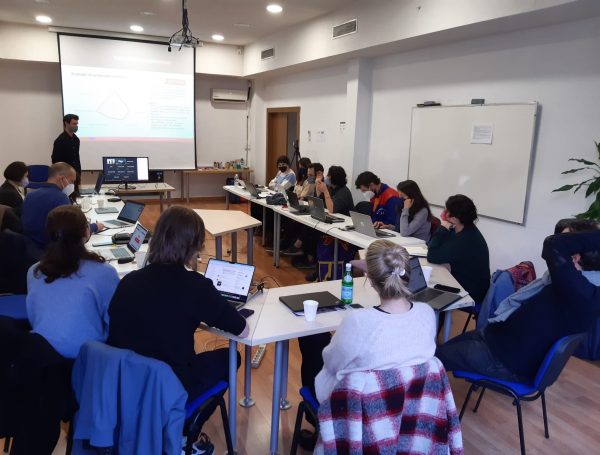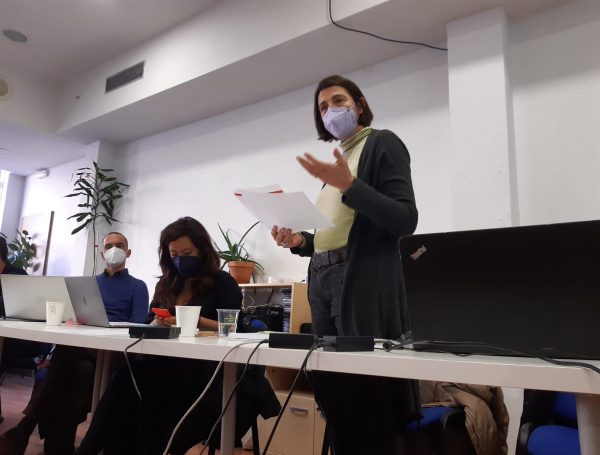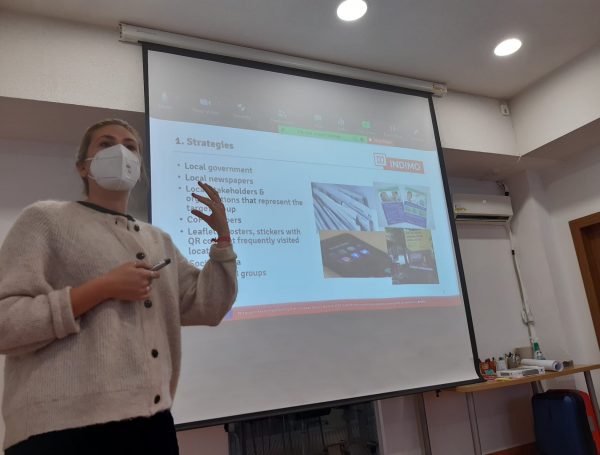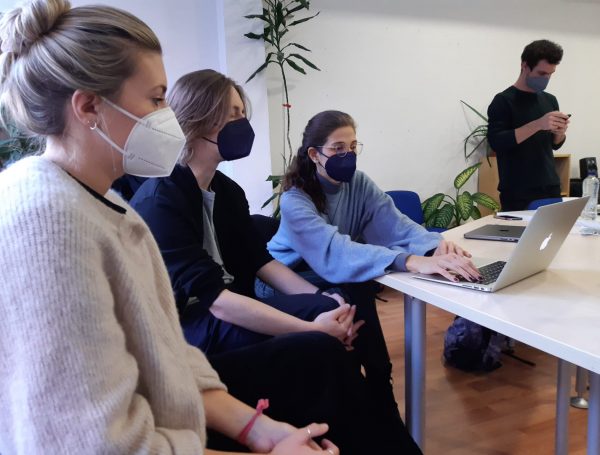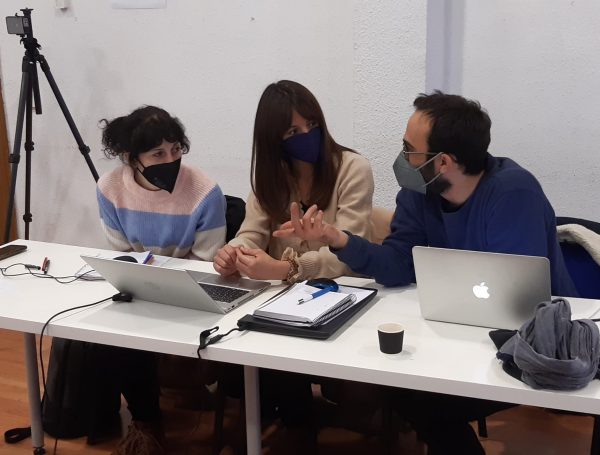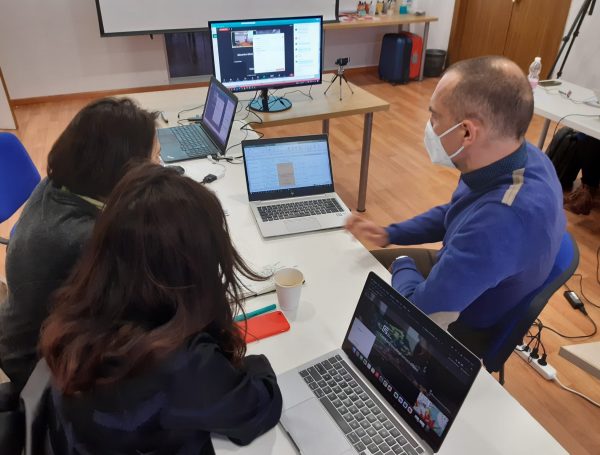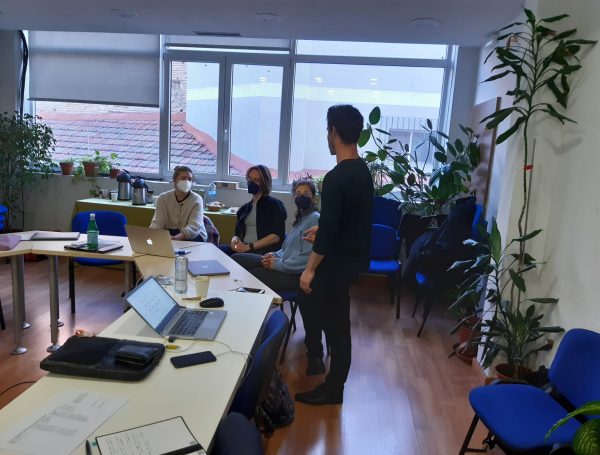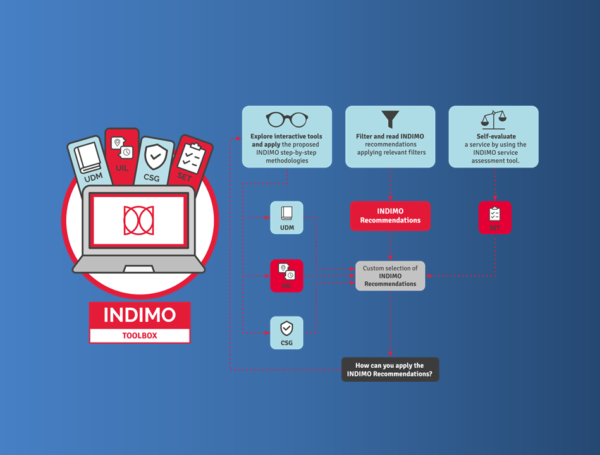By Sabina Giorgi, researcher at Deep Blue Italy
On the 29th and 30th of November 2021 the INDIMO consortium partners finally met in person for the third project consortium meeting. It was a hybrid event organized by cambiaMO – changing mobility, and hosted in the cooperative’s facilities in Madrid.
Fifteen members finally met again after the project kick off meeting in early 2020. Other partners, including two Scientific Advisory Board (SAB) members attended the meeting remotely. This hybrid event goal was to facilitate the knowledge exchange about the project advancements but also to reinforce relationships among partners before starting the third and last year of the project. It was conceived as an interactive meeting, thus it included only few presentations, focusing more on a teams building activities and participatory sessions.
DAY 1 – Status of INDIMO Toolbox development
This year the research delivered a preliminary version of the INDIMO toolbox, including: the first version of the Universal Design Manual, the Universal Interface Language and the Cybersecurity and privacy assessment guidelines. On the first day of the meeting activities focused on discussing about the refinement process of the INDIMO tools, taking into consideration the feedback collected during the pilot phase 2 (i.e., redesign of services in the pilot sites), and the evaluation process.
How can we make the INDIMO tools more usable?
Useful insights came from the INDIMO developers, operators and researchers. Summarising the discussion, what emerged was the importance of:
- providing more examples to easily explain the different topics addressed in the tool
- creating specific reading paths for the different project target users (e.g., policy makers, developers, user representatives, …)
- developing a uniform structure for all tools, to allow stakeholders learning how to navigate the tools once for all
How can we ensure successful promotion and uptake of the INDIMO Toolbox?
The dissemination and exploitation session focused on finding more market oriented conferences to promote the different tools, in order to reach out for a larger audience of potential users.
DAY 2 – Co-design of the Policy evaluation tool
The second day of the meeting was dedicated to the presentation of the preliminary version of the Policy Evaluation Tool (PET). VUB team engaged attendees in an interactive exercise, asking to i) check and reformulate the questions included in the PET checklist ii) discussing the best format to use for each question (open question, Likert scale, …) and iii) the relevance of the identified evaluation criteria (e.g., learnability, time efficiency, satisfaction, coherence, …).
Also, participants contributed in the identification of the engagement strategies, to foster the user/non-user recruitment in each pilot site. Five groups representing the five pilots worked on finding new solutions and proposals taking into consideration the characteristics of their target users.
A final discussion about the risk and data management, project management issues and next actions closed the meeting.
Advisory Board contribution
Thanks to the reflections of INDIMO Scientific Advisory Board (SAB) members Anne Frye and Liv Östedal, we collected key messages. One leading question was:
Are our tools really addressing the needs of the people at risk of exclusion from digital mobility services?
Anne Frye answered that INDIMO has a great chance of producing something useful for the users, due to the approach applied that allows looking at exclusion from a lot of different angles.
How can we make sure that tools like the INDIMO Toolbox are practically usable (so it does not just sit on a shelf, but can actually change some lives)?
SAB members’ recommendations for this last year of the project stressed the need to set up an effective exploitation strategy to present the INDIMO toolkit to all relevant stakeholder groups and to build on the commercial interest of providers to adopt the guidelines. Also, policy should make Universal Design approach mandatory for IT development. In this way, it would become a standardised approach.
Read more about our user-centered activities in the pilot sites’, involving all our target users:
Co-creation community
Community of practice

